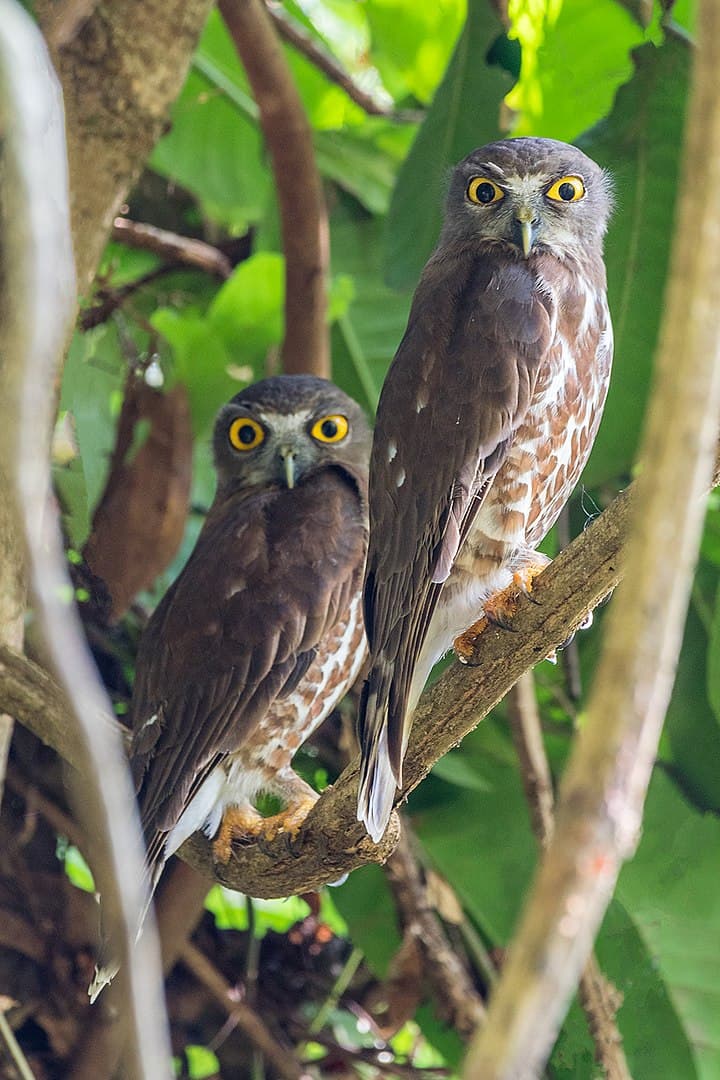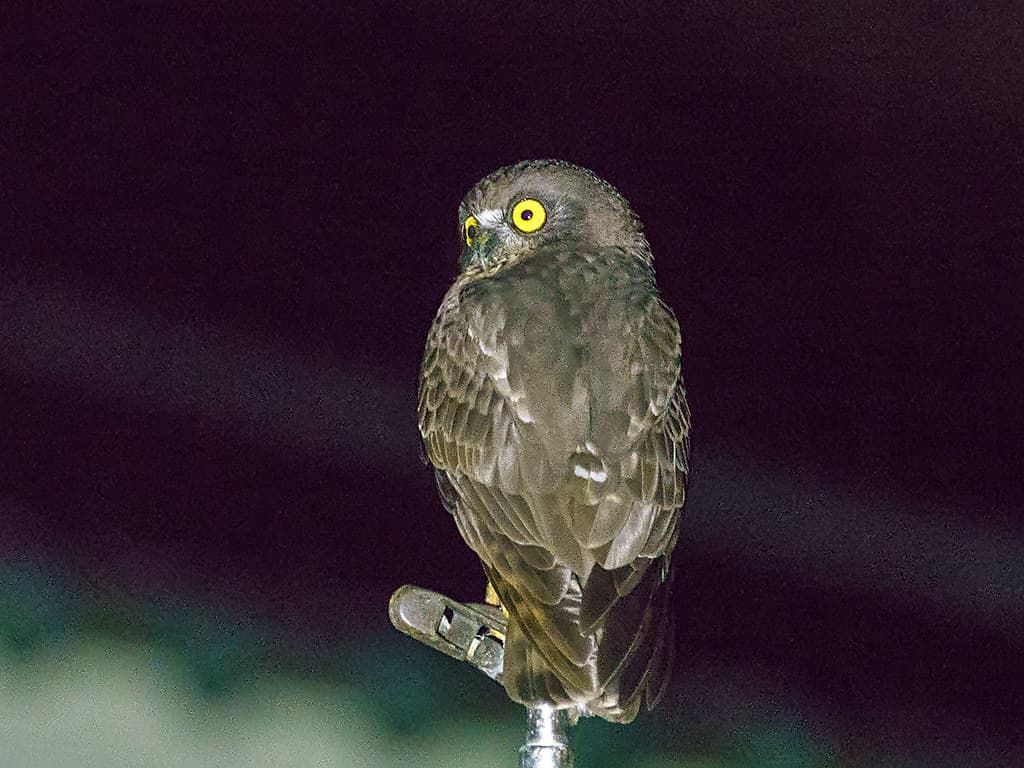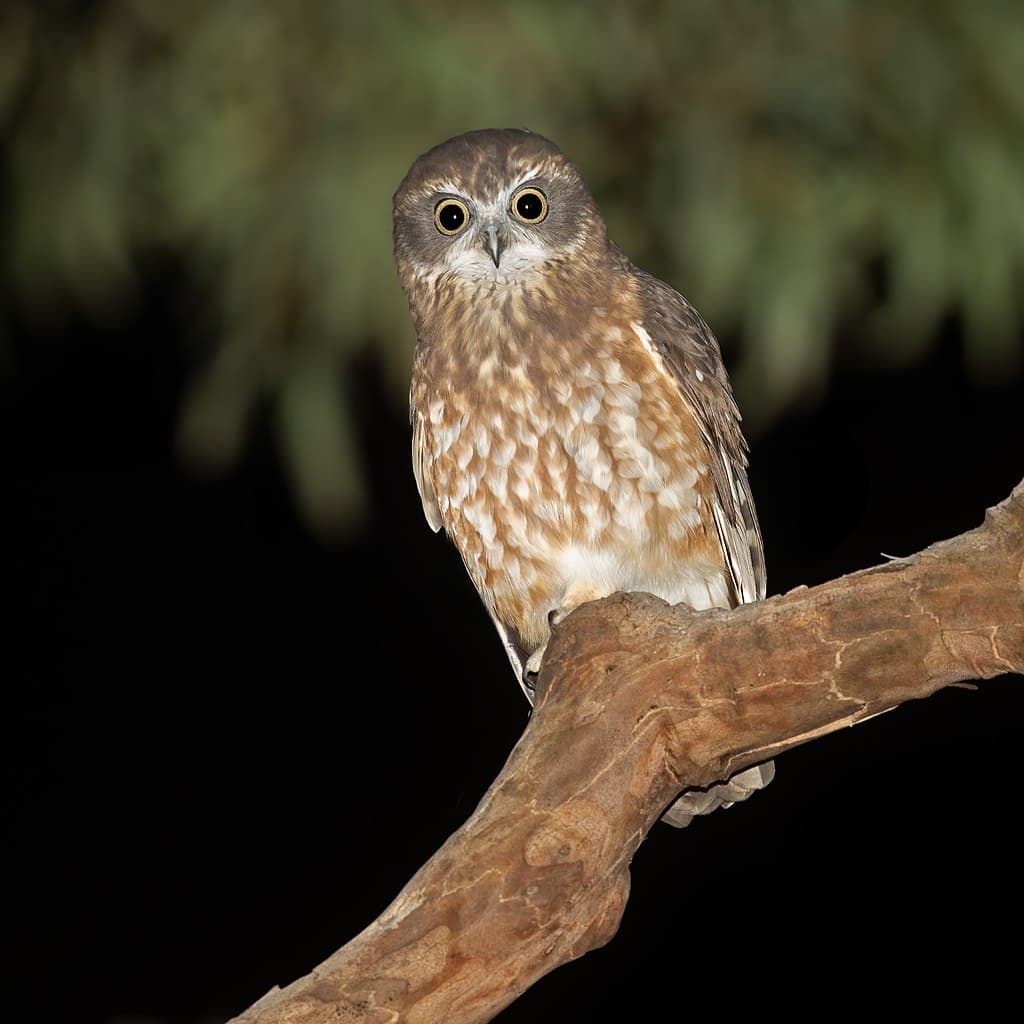As an owl lover, knowing that boobook (មៀមខ្លែង) exists in Cambodia is something that I find very interesting. We only have 2 boobook species here, and not many people are fans of this cousin of the owls. Just like other cultures, this wild bird is also considered a bad omen that brings death in Cambodia. And if you haven’t heard of them before, definitely check them out below with me.
Brown Boobook (មៀមខ្លែងព្រៃ)

Also goes by the name brown hawk-owl, brown boobook is a medium-sized owl with a length of 32 centimeters. The other nickname is because of its hawk-like shape, with the long tail and lack of the owl’s distinct facial disk. Besides the unique features, the brown boobook has dark brown upperparts and whitish or dark brown underparts with a barred tail. Their large eyes are bright yellow in color, and they do not have ear tufts.
This wild bird inhabits forests and well-wooded country areas in most of tropical South Asia and Southeast Asia. Other common habitats are gardens, local parks, mangroves and treed residential areas, plantations, and rainforests. In their habitats, these crepuscular and nocturnal birds roost during the day and hunt at dusk. Brown boobook’s main diet consists of frogs, large insects, lizards, mice, and small birds. Their population is doing well but they are still facing threats from deforestation and habitat loss.
Northern Boobook (មៀមខ្លែងទ្រូងឆ្នូតត្នោត)

Used to be a brown boobook, the northern boobook now belongs to its own species with 2 subspecies as well. A northern boobook is around 29 to 33 centimeters long, and it also has a hawk-like appearance. It has a brown-black body and wings, and its tail feathers have lighter brown horizontal streaks. As for its crown, face, and neck, they are more grayish brown except for a small white patch above the beak. This boobook species also has yellow-gold eyes, looking a little intimidating when they stare at you.
Northern boobook is distributed across Siberia, South Asia, and Southeast Asia, living in forests and woodland areas. More than that, they also inhabit broadleaved deciduous and broadleaved evergreen woodland mixed with conifer plantations, lowland rainforests, and mangrove swamps. In those habitats, they prey on insects, invertebrates, and vertebrates as well as smaller birds and small rodents.
Related Post: Nighjar Species In Cambodia
